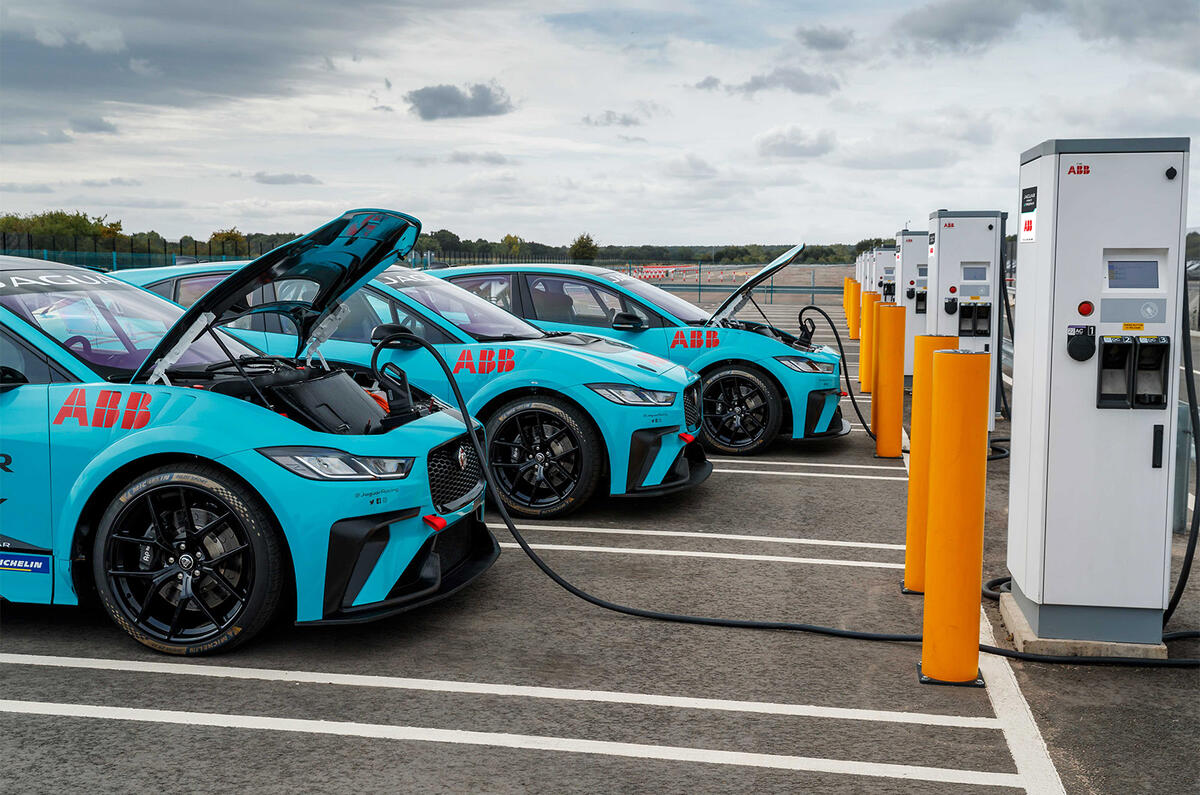Technology transfer between racing and road cars is often overstated. It shouldn’t shock you to learn, for example, that Lewis Hamilton’s Mercedes-AMG hybrid Formula 1 car has little in common with the GLB 300e.
Similarly, the all-electric powertrains used in Formula E by the likes of Audi, BMW, Jaguar, Nissan and Porsche are only tangentially related to those in their electric road cars. Motorsport is, as ever, as much an exercise in marketing as research and development.
However, that doesn’t mean technology transfer doesn’t occur. In fact, it often does where you would least expect it, such as in rear-view mirrors and speed cameras. Here’s another: Formula E tech is set to soon make EVs faster – not to accelerate but to charge.
Currently, Formula E cars are charged by mobile generators that run on ultra-low-emissions glycerine developed by British firm Aquafuel Research. But when the third-generation car is introduced for the 2022/23 season, ABB (Formula E’s title sponsor) will provide high-speed charging points.
This Swiss firm may not be a household name, but it’s a major developer of high-speed EV chargers, supplying them to public providers such as Ionity.
The unit it’s developing for Formula E is loosely based on the portable 50kW one it deployed in the Jaguar I-Pace eTrophy support series this season. The planned 2022 Formula E charger will be able to charge two cars simultaneously, with 30-second mid-race pit stops enabling around 600-800kW of power to be added to a car.
How does this benefit EV drivers? Well, don’t expect to be able to charge your battery at such extreme speeds in the near future: the charging technology is capable, but the strain exerted on the car’s battery would be a problem. What can ABB transfer from the track to the road, then?
“A key area we’re working on for the next-gen charger is the hand-off: how quickly we can start charging,” says Tarak Mehta, who heads ABB’s electrification division. “We’re looking at the protocols and interlocks [between charger and car] and the speed we can process that information.
“When you plug in a car, it takes 15 to 30 seconds before power flows, because of those protocols. For Formula E, we want to take a zero off that. Reduce that on a charge from 20 to two seconds, multiply that time saving by our 14,000 road chargers worldwide and the time saved increases the global availability of chargers.”
If that’s not enough, here’s an instance of motorsport technology transfer that I-Pace owners have benefited from already. Last year, Jaguar released a software update for its EV that increased its range by around 12 miles, and a huge part of that was thanks to the (soon-to-end) eTrophy series.
Engineers studied data from the race cars and realised that their batteries didn’t need as much cooling as expected, even at racing speed. Therefore Jaguar revised the software for the Jaguar I-Pace’s radiator vanes, keeping them shut for longer to boost aerodynamic efficiency.
Extra range and marginally faster charging? Unexpected, useful bonuses of EV racing.
READ MORE
Racing lines: Why Formula E's season will end with a bang in Berlin




Join the debate
Add your comment
Charging ev’s
With 800kwh charging being equivalent usage of 400 houses at any given time the electricity network is not capable of this demand in many places. Not only that but electricity demand is usually charged at so much per kWh so this costs more to do it. Anyone can come up with charging at higher voltages and large currents but no one is doing anything about the infrastructure. The costs involved in this are huge and the electricity companies are private so unless government stumps up the cash it will not be done. As for charging points at lamp posts on streets, what do you think will happen when some yob super glues a load of them so they can't be used.
Short answer is no this won't
Short answer is no this won't help at all.
Massive amounts of research are being spent in this area so the cutting edge stuff will by pass motorsport and go straight into regular cars.
The budget of Formula E is a few million per year per team once you strip out team operating costs. Multiple manufacturers are spending billions per year in this area.
It will have as much impact as Redbull air race has had on aerospace technology.
No pre flight checks required (just take-off asap)
If the rules dictate that the same battery must be used for X amount of races and must remain "untouched or serviced" for several races let's see if they still want to do this. I don't want to be a killjoy, however people must undestand the amount energy going into the battery is high and that the battery must be OK'd before power is applied to it, also the "electricians" charging the battery will be likely be required to wear nomex/fireproof attire I assume, not flip flops and a t- shirt.